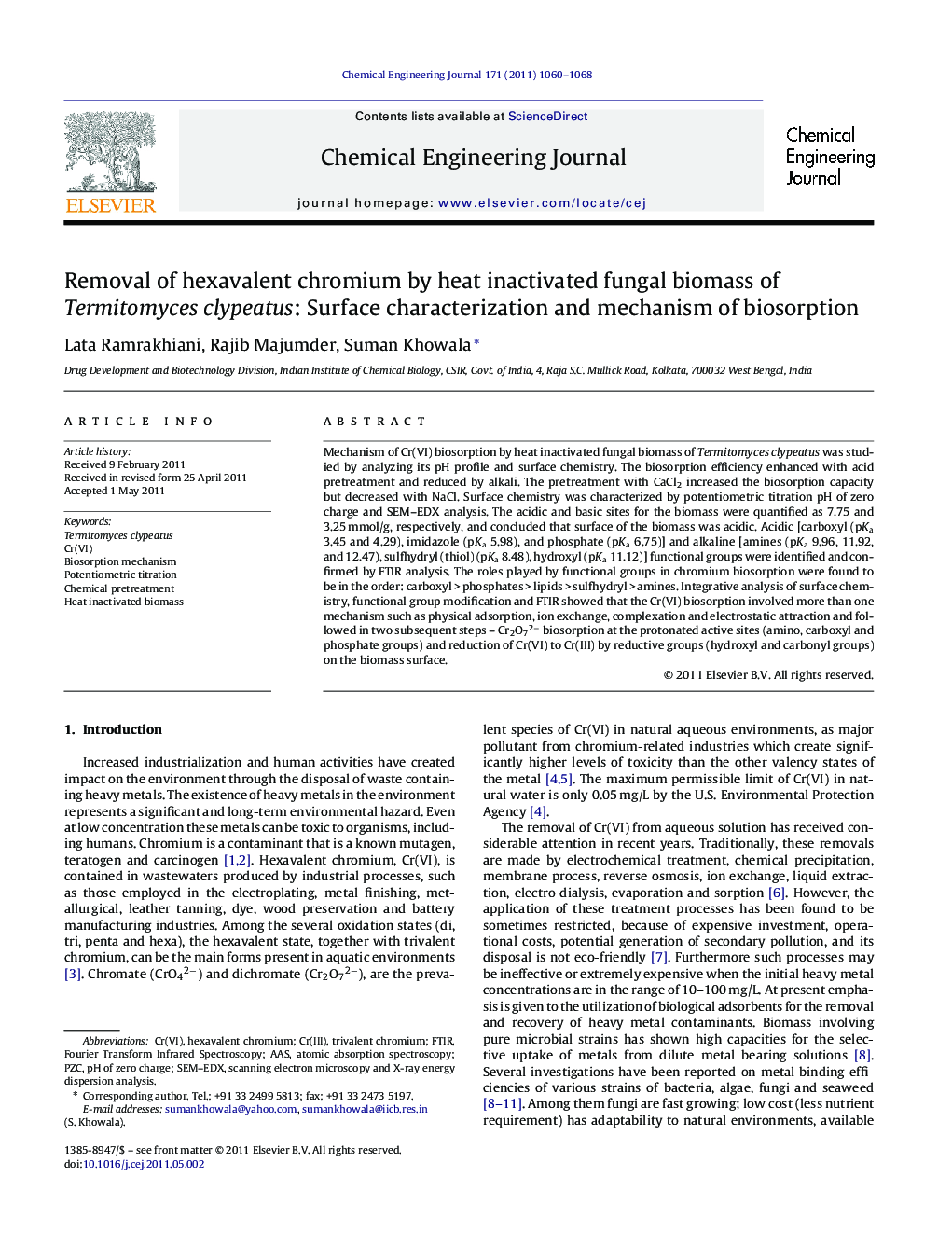| کد مقاله | کد نشریه | سال انتشار | مقاله انگلیسی | نسخه تمام متن |
|---|---|---|---|---|
| 150900 | 456459 | 2011 | 9 صفحه PDF | دانلود رایگان |

Mechanism of Cr(VI) biosorption by heat inactivated fungal biomass of Termitomyces clypeatus was studied by analyzing its pH profile and surface chemistry. The biosorption efficiency enhanced with acid pretreatment and reduced by alkali. The pretreatment with CaCl2 increased the biosorption capacity but decreased with NaCl. Surface chemistry was characterized by potentiometric titration pH of zero charge and SEM–EDX analysis. The acidic and basic sites for the biomass were quantified as 7.75 and 3.25 mmol/g, respectively, and concluded that surface of the biomass was acidic. Acidic [carboxyl (pKa 3.45 and 4.29), imidazole (pKa 5.98), and phosphate (pKa 6.75)] and alkaline [amines (pKa 9.96, 11.92, and 12.47), sulfhydryl (thiol) (pKa 8.48), hydroxyl (pKa 11.12)] functional groups were identified and confirmed by FTIR analysis. The roles played by functional groups in chromium biosorption were found to be in the order: carboxyl > phosphates > lipids > sulfhydryl > amines. Integrative analysis of surface chemistry, functional group modification and FTIR showed that the Cr(VI) biosorption involved more than one mechanism such as physical adsorption, ion exchange, complexation and electrostatic attraction and followed in two subsequent steps – Cr2O72− biosorption at the protonated active sites (amino, carboxyl and phosphate groups) and reduction of Cr(VI) to Cr(III) by reductive groups (hydroxyl and carbonyl groups) on the biomass surface.
► The surface of the heat inactivated biomass was acidic.
► Cr(VI) removal by adsorption, ion exchange, complexation, and electrostatic attraction.
► Acidic/alkaline functional groups, imidazole, –CO, –PO4, –NH2, –SH, –OH on cell wall.
► SEM–EDX showed new shiny bulky particles on the surface and Cr peaks in the spectra.
► Cr(VI) sequestration by potentiometric titration, PZC, functional gp modification, FTIR.
Journal: Chemical Engineering Journal - Volume 171, Issue 3, 15 July 2011, Pages 1060–1068